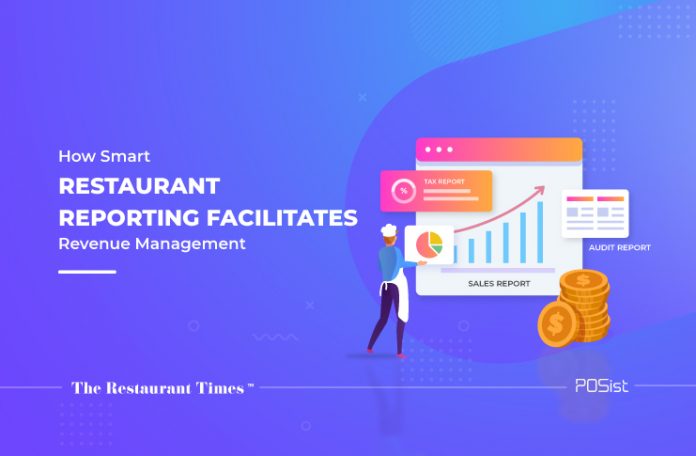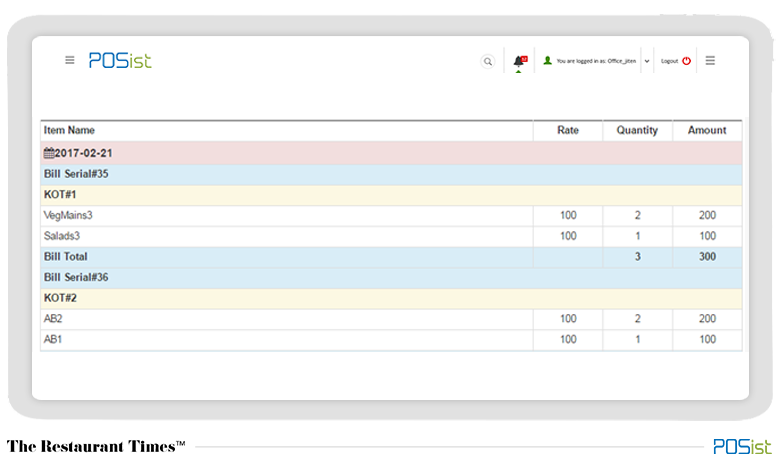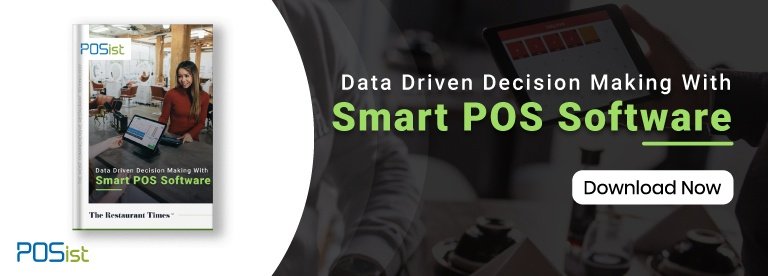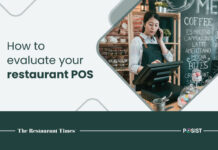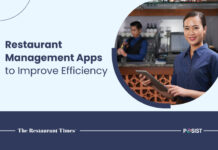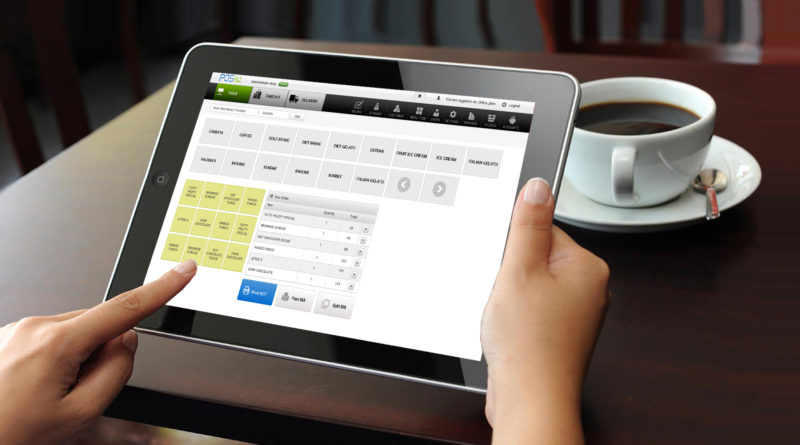Data plays a major role, especially in the restaurant industry. Without data, you’re just a restaurateur with an opinion! The topmost restaurant chains of the country like Oh! Calcutta, Thai Pavilion, Bukhara, etc. credit their success to integrated restaurant reporting. Since they could track every operation through numbers, it was easier for these chains to make the right decision.
As a restaurateur, you are bound to have your own set of ups and downs. Managing a restaurant alone is a cumbersome task when it comes to tracking revenues, serving every dish like it’s your first along constantly seeking customer feedback. This is why around 60% of restaurants fail to be successful even after being launched with great fanfare. An integrated restaurant reporting system gives you multiple real-time reports about your revenue, stock, staff, so on and so forth. All these reports contribute to making better financial decisions for the restaurant.
The need for an integrated restaurant reporting system arises as the customers demand consistency.
“Ensuring that consistency is maintained across all of your outlets is fundamental to restaurant success. We strongly believe that profitability is a result of repeatability. You have to give out a great quality product at an affordable price. And you have to do that every day. Without regular reporting and feedback, it is a major challenge for any restaurateur,” says Harish Mithra, owner of True South.
Here are the comprehensive benefits restaurant reporting system provides restaurateurs mention how integrated restaurant reporting helps manage restaurant finances better
A Comprehensive List Of Reports That You Need For Efficient Revenue Management At Your Restaurant
The thought of getting data in real-time and at your fingertips could be both overwhelming as well as exciting at the same time. To achieve your day-to-day goals at your restaurant, it becomes crucial that you look at the bigger picture every day. That being said, an integration of multiple reports on one platform actually helps you make better business decisions like opening your next outlet, managing inventory, hiring staff, etc.
Let’s dig deep into the different reports your restaurant POS should ideally have as templates for you to use:
i) Tax Reports
ii) Sales Reports
iii) Staff Reports
iv) Employee Payroll
v) Audit Reports
vi) Customer Reports
vii) Stock and Purchase Order Reports
Some restaurant chain owners say that their first priority is to have an integrated report system. It helps than compare performance against their business goals. Let’s start with one of the most important kinds of reports, your restaurant sales!
i) Sales Reports:
The pulse of your restaurant is clearly reflected in your costs and sales data. They technically are an indicator of your brand’s growth. Therefore, we have paid extra attention to these reports. Here is how the bifurcation should be done in your POS:
a) Top-selling/ worst selling: Gives you an idea about your best selling vs your least selling menu item. You can make combinations of the two or put attractive offers to fast-track sales.
b) Sales activity by outlet: It is impossible for a restaurant chain owner to be present at more than one location at a time. These reports help you to manage each of your outlets individually. You can get real-time inputs on sales, inventory, staffing, and a number of other operational aspects.
c) Sales by employee/ product/ department: These reports give you an overall idea about the efficiency of each of your employees or product. They help you define performance targets and incentivize your staff.
d) Outlet Level Menu Reports (sales by menu item): While managing multiple outlets of your restaurant chain, you must have observed that no two outlets behave in the same way. One dish might be the bestseller at one outlet while being a non-performing dish at the other. This is why you need to have a comprehensive report of each of your menus, and the sales of each of the menu items, at different outlets.
You can thereby decide where to put your money, to boost up that particular outlet’s sales.
e) Most commonly returned items: These reports help you rationalize your menu. You could either remove the non-performing items or put them in combination with others, to increase their sales. These items can either be removed or innovated to ensure that
f) Pnl Calculation Reports: These reports give you a clear indication of your business growth. Handling Pnl calculations daily enables you to understand if your new outlet is actually working in the new area. You can try boosting up its sales through marketing strategies.
g) Growth Reports: These reports give a comparison between the current week and previous weeks.
If your restaurant offers multiple cuisines or product types, you can filter sales by category. You can even view unit-level or outlet-specific food costs and revenues to determine whether the menu item is profitable or not. POS systems also generate multiple graphs and pie charts based on the data including hourly sales figures and the average spend of each customer.
Based on the demographics of each area your restaurants operate in, you can plan your marketing and service offering keeping in mind the purchasing power of that area and so on. Along with that, you would also know what works where and put offers on the non-performing items accordingly.
Here’s how your daily sales report should look like!
-
Tax Reports:
Another set of restaurant reports is dedicated to tax consumption. These reports are of utmost importance for restaurant chain owners, who have multiple outlets spread across several locations.
i) Tax summary: Gives you an estimate of the total sales and their breakdown for a day or range of days. You can look at all these reports and ensure that you pay off your taxes in time! Especially for a restaurant chain with multiple outlets at different locations. Here, taxes could vary for each outlet, and hence, need to be streamlined.
ii) Settlement Reports: Give you clear details about the volumes of bills processed via credit card settlement. This feature helps your cashier arrive at the correct sales figure on a day-to-day basis.
iii) Bills On Hold: These reports tell you about the number of bills settled that included discounts, tips, split payments, etc when the payments are processed by the bank. This gives you an accurate picture of your accounts receivable. Balancing your books is simplified using the integrated billing functionality that POS systems come with.
iv) Removed Taxes: Apart from paying off taxes for each of your outlets, the removed taxes report enables you to see a compiled list of bills wherein the taxes have been exempted from the bills.
“It’s difficult for us to get data from different outlets. Especially for a brand like ours, where we have outlets of different formats, and there are outlets without a computer system in them. We just have a different type of POS software that helps us to generate tax invoices, and hence never miss the deadline,” adds Nishant Vijayakumar, founder of Brownie Heaven.
-
Payment Reports:
With payment reports, restaurateurs are monitoring their daily cash inflows and outflows. Cash, credit card, digital wallet payments have increased substantially over the years. The massive data produced needs proper segregation and analysis. This is why an integrated restaurant reporting system, comprising of cash events, refund reports, reports on coupons, voided sales, etc. becomes crucial for sustainable growth.
Getting these reports in real-time made possible by modern POS systems gives restaurants complete visibility about the financial position of their businesses.
The payment reports you should ideally be looking at in your restaurant POS are as follows:
i) Cash Events
ii) Refund
iii) Discount and Coupon Reports:
v) Voided Sales
vi) Payments by Payment methods (card, cash, gift card)
vii) Employee Payouts
Here’s a typical view of the payment reports that you should look at!
-
Inventory Reports:
Inventory management is by far the most important but often neglected aspect in an average restaurant. These reports are of huge importance to the purchasing managers of your restaurant since there needs to be an inflow of raw materials on a daily basis. On the other hand, the finance department also needs to worry about the food costs, which in turn, decide the overall profit for your venture.
Tracking inventory effectively prevents food– reducing food cost– enhancing your overall brand growth.
i) Inventory reorder report
ii) Value report
iii) Raw ingredient report
iv) Real-time inventory tracking report
Audit Reports:
Audit reports are essential for the owner to know exactly how the staff operates, any leak that occurs during management, and the overall working of an outlet. Digging deep into these reports will give you a fair idea about the value of each of your staff members. You can use this information to make better decisions related to your operations and staff.
i) KOT Detail: These reports give you details of every order received on a particular day. A KOT number with item details is clearly reflected in the report, helping you prioritize your kitchen operations.
ii) KOT Tracking: These reports help to track order chits by bill number, to further help organize your order preparation and delivery.
iii) Purchase and Return Histories per Customer: A very interesting set of reports including purchase and return histories of each of your customers that enables you to understand the purchasing pattern of a customer. The average spend and most preferred orders are also reflected in the same report, helping you to upsell when they place consequent orders.
-
Staff Reporting:
Employees of a brand become its face to the customers they serve. The service of a restaurant is typically judged by how happy its employees are. A restaurant giant like Byg Brewski also attributes its success and growth to the loyalty the staff has shown over the years. This is why taking care of your restaurant staff becomes crucial. Having multiple staff reports makes it easier to understand what actually happens at your outlet.
Your ideal restaurant POS should have reports including attendance reports, performance reports, and so on. Streamlining such restaurant reporting will help you incentivize your staff better, and thereby retain them for a longer time.
“Your staff is your customer even before your customers, you must take extra care of them,” adds Mithra.
i) Attendance Reports: These reports enable you to check the log-in hours for each employee, and thereby an indication of their productivity.
ii) Performance Reports: Calculating the performance of each waiter in terms of their table turnover number, upsold orders, the time they took to shift to the next table, etc.
iii) Compare First-Line Staff: Waiter performance reports enable you to understand your staff deeply. These reports include the tables they cover, the time they spent in turning to the next table, errors while bringing orders, and so on. You can then compare one waiter to the other and ensure maximum profitability by taking subsequent decisions.
Have a look at a typical staff report for your restaurant!
All in all, having detailed information about your restaurant operations on a real-time basis is certainly going to aid your financial decisions. Since revenue management is the backbone for restaurant expansion, having a technology that helps boost your decision-making is a huge help!
In case of any further queries regarding revenue management and getting access to extensive restaurant reporting at your restaurant, please feel free to contact our experts!


